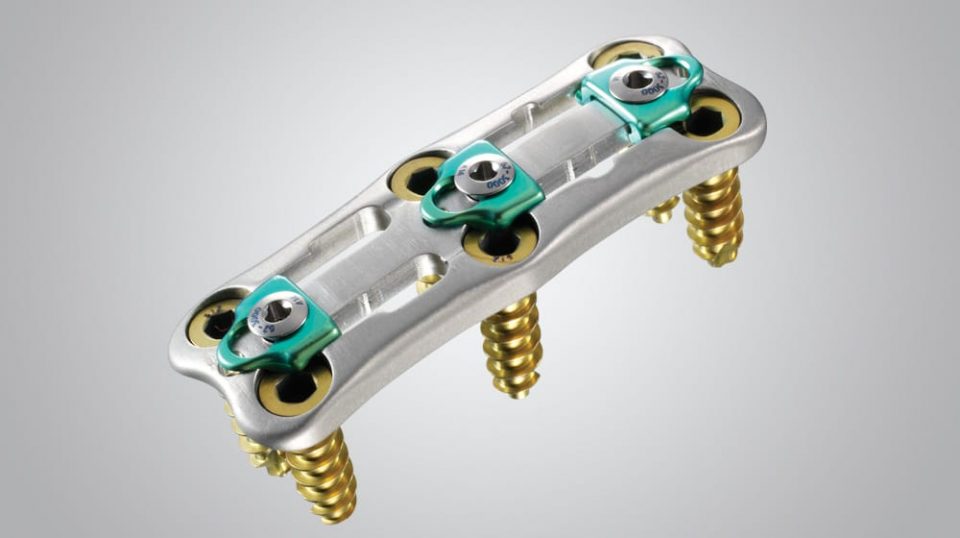Product Highlights
- Narrow plate width (15mm) for minimal tissue retraction
- Color-coded bone screws for constrained, semi-constrained or hybrid constructs
- Low profile plate
- Intuitive locking mechanism
The Hallmark® Anterior Cervical Plate (ACP) System offers a variety of options for individual patient requirements and precise fixation delivery. The implants and instruments are designed to simplify and reduce surgical time for fast, reproducible results. With a narrow plate width and large plate slots for visual alignment and bone graft confirmation, the Hallmark ACP was developed with expanded implantation opportunities. The Hallmark ACP System’s plates are narrow and engineered to help minimize tissue retraction during placement. Once fixed, the system’s intuitive locking mechanism resists back-out. Designed with variable bone screw choice gives surgeons a range of options to best suit each patient.


The Hallmark ACP System is a temporary implant, intended for anterior fixation to the cervical spine from C2 to C7. The specific clinical indications include:
The Hallmark ACP System is contraindicated in patients with a systemic infection, with a local inflammation at the bone site, or with rapidly progressive joint disease or bone absorption syndromes such as Paget’s disease, osteopenia, osteoporosis, or osteomyelitis. Do not use this system in patients with known or suspected metal allergies. Use of the system is also contraindicated in patients with any other medical, surgical or psychological condition that would preclude potential benefits of internal fixation surgery such as the presence of tumors, congenital abnormalities, elevation of sedimentation rate unexplained by other disease, elevation of white blood cells or a marked shift in white blood cell differential count.